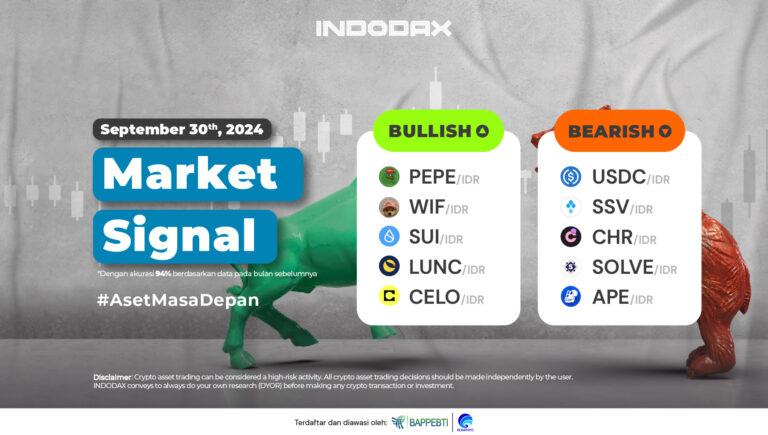S&P 500 is a stock index that tracks the share prices of the 500 largest public companies in the United States.
Officially known as the Standard & Poor’s 500 Composite Stock Price Index and commonly referred to as the S&P 500, this index is one of the main tools used to track the performance of stocks in the US.
To learn more about what the S&P 500 is and its role in the stock market, the criteria and how it works, the 10 largest companies in the index, and how it is calculated, check out the following review.

What is the S&P 500 and its Role in the Stock Market
It’s important to know that when news reports and financial experts talk about what’s happening in the “stock market,” they’re most likely referring to the S&P 500.
An index like the S&P 500 tracks the price of a basket of securities. Their purpose is to represent the performance of a particular market, industry, or segment of the economy-or even the entire national economy.
There are indices that track almost every asset class and business sector, from the US corporate bond market to futures contracts for palladium.
The S&P 500 tracks the prices of large stocks in the United States, which are the stocks of companies that have a total outstanding share value of more than $10,000,000,000.
By following the S&P 500, you can easily see whether the largest stocks in the United States are rising or falling in value.
This is why the S&P 500 is often considered a proxy for the overall health of the stock market or even the US economy.
Read more: Why are stock indices important in the investment world?
Criteria and How the S&P 500 Index Works
The five hundred largest public companies in the US by market capitalization are represented in the S&P 500. The companies included in the S&P 500 are referred to as constituents, and they are chosen to represent each major industry.
The S&P 500 index is weighted by market capitalization so that each constituent’s share in the overall index is based on the total market value of all outstanding shares.
Constituents with larger market capitalizations have higher percentage weights in the index, while smaller market capitalizations have lower weights.
The following companies are the top 10 constituents in the S&P 500 by index weight, according to S&P Dow Jones Indices.
A company must be listed as a public company and based in the United States to be included in the S&P 500 Index.
It must also meet certain requirements regarding liquidity and market capitalization, have a public float of at least 10% of its total shares, and have positive earnings for the last four quarters.
Top 10 Largest Companies in the S&P 500 by Index Weighting
The following are some of the top constituents in the S&P 500 and their business sectors to know about, including:
| Company | Stock Ticker | Sector |
| Apple | AAPL | Information Technology |
| Microsoft | MSFT | Information Technology |
| Amazon.com | AMZN | Non-staple consumers |
| Nvidia | NVDA | Information Technology |
| Alphabet (kelas A) | GOOGL | Communication Services |
| Tesla | TSLA | Non-staple consumers |
| Meta Platforms (kelas A) | META | Communication Services |
| Alphabet (kelas C) | GOOGL | Communication Services |
| Berkshire Hathaway (kelas B) | BRK.B | Finance |
| UnitedHealth Group | UNH | Finance |
It is worth noting that some companies appear more than once-Google’s parent, Alphabet, appears twice. This is because Alphabet and other companies have more than one class of stock with substantial market capitalization.
Therefore, the S&P 500 may contain more than 500 stocks, even though it only tracks 500 companies.
The index weights in the S&P 500 are very important as they reflect each company’s contribution to the overall performance of the index.
The index uses a market capitalization-weighted method, which means that companies with higher market values have a greater influence on the movement of the index.
How is the S&P 500 Calculated?
The value of the S&P 500 is calculated by multiplying the market capitalization of each constituent company by the total number of shares outstanding. Market capitalization is equal to the share price of each company multiplied by the total number of shares outstanding.
Shares outstanding represent shares owned by shareholders. Outstanding shares do not include shares owned by the company itself. As a result, each company in the S&P 500 index has a different weight.
The weight of each company is based on market capitalization so each company usually has a different weight. Companies with larger market capitalizations have higher weights.
In this case, the greater the weight of a stock, the greater impact an increase or decrease in the price of that stock has on the overall value of the index.
Read more: Bonds, Stocks, or Crypto: Which is the Safest?
Requirements for Entry into the S&P 500 Index
To be part of the index, a stock must meet criteria, including having a market capitalization of $14,500,000,000 or more. Other important requirements for a company to be added are as follows:
- Must have a primary listing on a qualifying United States exchange
- Must be subject to United States securities laws
- Earn 50% or more of its revenue in the United States
- Have a public float of at least 10%. “Float” refers to the shares available for trading by the public, excluding shares owned by insiders, e.g. officers and directors of the company
- Have at least 250,000 shares traded in each of the last six months
The importance of liquidity in getting a company into the S&P 500 index cannot be overlooked. Liquidity refers to how easily a stock can be traded without causing significant changes in price.
Companies with high liquidity allow investors to buy and sell shares quickly, which can help create a more stable and efficient market.
That’s especially important for an index like the S&P 500, which involves many institutional and individual investors dealing in large amounts.
Comparison of S&P 500 with Other Indices
The S&P 500 is one of several leading equity indices used to measure and understand the performance of the United States stock market. Here’s how it compares to two other common stock indices.
1. S&P 500 vs. Dow Jones Industrial Average
The Dow Jones Industrial Average, commonly known as the Dow or DJIA, tracks a smaller number of companies than the S&P 500.
The DJIA index includes 30 blue chip stocks, which are considered the largest, most stable, and best-known companies that are leaders in their industries.
Unlike the S&P 500, the Dow uses price weighting instead of market capitalization weighting. This means that a company’s weight in the index is directly proportional to its stock price.
Components with higher stock prices are given greater weight in the index. There are several important implications of this, including:
- The smaller components of the Dow may have disproportionate influence. Since the weighting is based on stock price, companies with higher stock prices have more influence on the level of the DJIA than if they were in a market capitalization-weighted index, regardless of their market capitalization.
A company with a cheaper stock but a much larger market capitalization will play a smaller role in influencing the direction of the Dow.
- The DJIA may experience more volatility. Due to its price weighting, the Dow may also experience sharper and more frequent fluctuations than the S&P 500.
For example, if the stock of company XYZ is worth $200 and falls by $1, the DJIA will fall by a larger percentage than if a company with a cheaper stock price loses the same amount. This is even though $1 is a smaller percentage of $200 than, say $20.
Nonetheless, over the long term, the S&P 500 slightly outperformed the Dow. According to Morningstar Direct, the S&P 500 recorded a price change of 6% versus 5.58% for the DJIA between February 2028 and July 31 this year.
On a total return basis (which includes dividends), the S&P 500 also outperformed the DJIA with 7.7% versus 0.58% since October 1987.
2. S&P 500 vs. Nasdaq 100
The Nasdaq 100 tracks the 100 largest and most actively traded non-financial domestic and international securities on the Nasdaq Stock Market.
Like the S&P 500, the Nasdaq also uses a market capitalization-weighted formula, although there are other factors that influence a stock’s inclusion.
To be part of the Nasdaq 100, a stock must have a minimum daily trading volume of 100,000 shares and have been traded on the Nasdaq for at least two years.
Unlike the S&P 500 and Dow, the Nasdaq 100 includes few foreign companies and is heavily weighted towards technology companies.
As such, it is less reflective of the overall US market and more reflective of investor sentiment towards the tech industry.
Over the past 10 years, the Nasdaq 100 has averaged an annualized return of 42.6%, while the S&P 500 has averaged a return of 11.2%.
However, keep in mind that the recent high returns are largely due to the large weighting of technology in this index.
How to Invest in the S&P 500
Since the S&P 500 serves as a good indicator for the United States stock market as a whole, many experts, including Vanguard founder Jack Bogle and legendary investor Warren Buffett, recommend that the general public invest in S&P 500 index funds.
In fact, Buffett left instructions for 90% of his estate to be invested in S&P 500 funds after his death. “There is no better bet than America,” he told CNBC’s Squawk Box.
To invest in an index like the S&P 500, you can buy shares of an index mutual fund or ETF that aims to mimic the performance of the index.
ETFs and S&P 500 index funds are among the least expensive fund options available, and both funds and ETFs provide easy diversification.
By buying just one share of an S&P 500 fund, you gain indirect ownership of 500 companies.

S&P 500 Competitors and Investment Alternatives
As an investment alternative to the S&P 500, there are several other indices that can also be considered, including the DJIA, Nasdaq, and Russell indices. The following is a review of each of these indices.
1. S&P 500 vs. Dow Jones Industrial Average (DJIA)
One common US stock market benchmark is the Dow Jones Industrial Average (DJIA). The S&P 500 is often the index of choice for institutional investors due to its depth and breadth.
Historically, however, the DJIA has more often been associated with significant equities from a retail investor’s perspective.
Institutional investors consider the S&P 500 to be more representative of the US equity market as it includes more stocks across all sectors: 500 compared to 30 stocks in the Dow.
The S&P 500 uses a market capitalization weighting method that gives a higher percentage allocation to companies with the largest market capitalization.
In contrast, the DJIA is a price-weighted index that gives higher index weights to companies with higher stock prices.
Market capitalization-weighted structures tend to be more commonly used than price-weighted indices across indices in the US.
2. S&P 500 vs. Nasdaq
Nasdaq is a global electronic marketplace for securities trading. Some equity market indices include stocks traded on Nasdaq.
A stock included in the S&P 500 Index can also be in one or more different Nasdaq indices. Some of the most widely watched Nasdaq stock indices include:
- Nasdaq 100 Index: Includes the 100 largest and most actively traded common stocks listed on Nasdaq.
- Nasdaq Composite Index: Often referred to simply as Nasdaq by the media, covers over 2,500 common stocks traded on Nasdaq
- Nasdaq Global Equity Index (NQGI): Covers international stocks
- PHLX Semiconductor Sector Index (SOX): A key barometer of semiconductor industry-related stocks
- OMX Stockholm 30 Index (OMXS30): Covers 30 actively traded stocks on the Stockholm Stock Exchange
3. S&P 500 vs. Russell Indices
Note that the S&P 500 is a member of a family of indexes created by Standard & Poor’s.
This family of indices is similar to the Russell family of indices, in that both use market capitalization weights, unless otherwise stated, as with equal-weighted indices.
Basically, there are as many as two significant differences in the construction of the S&P indices and the Russell family of indices.
Standard & Poor’s selects constituent companies through a committee, while Russell indices use a formula to determine which stocks to include.
There is no overlap of names in S&P-style indices, such as growth versus value. Russell indices can include the same companies in both value and growth style indices.
Conclusion: Why is the S&P 500 Important for Investors?
Well, that was an interesting article about what the S&P 500 is that you can learn more about in the crypto academy at INDODAX Academy. In conclusion, the S&P 500 is a leading indicator of the US stock market because it includes 500 large companies representing various economic sectors.
As one of the most reliable benchmarks for equity performance, the S&P 500 provides a clear picture of overall market trends and health.
Essentially, investing in the S&P 500 offers efficient diversification benefits, allowing investors to gain exposure to many companies at once without having to pick individual stocks.
As such, the S&P 500 makes an ideal choice for investors looking to reduce risk while still capitalizing on market growth.
FAQ
1. What is the S&P 500?
The S&P 500 is a stock market index that tracks the 500 largest companies in the US by market capitalization. The index is used as a barometer to measure the overall performance of the US stock market.
2. How is the S&P 500 Calculated?
The value of the S&P 500 is calculated based on the market capitalization of each constituent company. Market capitalization is calculated by multiplying the stock price by the number of shares outstanding.
3. Why is the S&P 500 Important?
The S&P 500 is considered important because it represents most of the market capitalization in the US and is used as an indicator of the overall health of the US economy.
4. How to Invest in the S&P 500?
You can invest in the S&P 500 through index funds or ETFs that track the performance of this index, such as the SPDR S&P 500 ETF Trust (SPY) or the Vanguard 500 ETF (VOO).
5. How is the S&P 500 Different from the Dow Jones and Nasdaq 100?
The S&P 500 tracks 500 large companies in the US, while the Dow Jones tracks only 30 large companies weighted by share price. The Nasdaq 100 focuses more on technology companies, covering the 100 largest non-financial companies.





 Polkadot 10.19%
Polkadot 10.19%
 BNB 1.03%
BNB 1.03%
 Solana 4.87%
Solana 4.87%
 Ethereum 2.37%
Ethereum 2.37%
 Cardano 1.68%
Cardano 1.68%
 Polygon Ecosystem Token 2.03%
Polygon Ecosystem Token 2.03%
 Tron 2.89%
Tron 2.89%
 Market
Market


